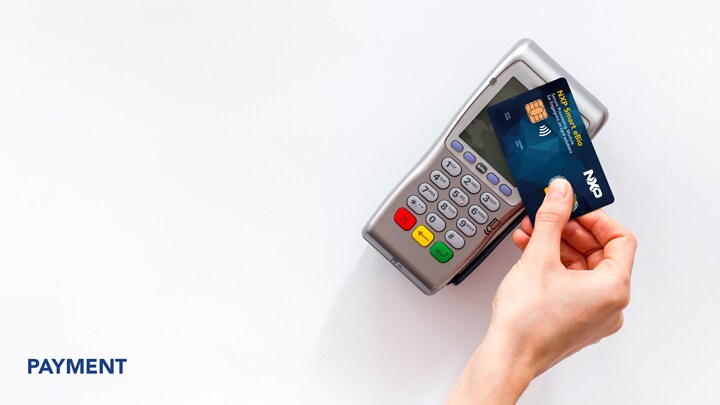How often do you use contactless smartcard technology? Whether you’re buying groceries, entering a building, riding public transport, crossing a border or doing any number of other tasks, contactless smartcard technology is likely to be part of the transaction.
Contactless smartcard technology was already an everyday part of life before the pandemic but Covid-19 has given us even more reasons to rely on it, since it enables a simpler, more sanitary way to confirm identity, make payments and access buildings.
To give contactless an added level of security, some formats require you to memorize and enter a PIN code or provide your signature. Having to deal with PINs and signatures is an added step which makes the process less convenient, and having to interact with shared keypads makes it harder to keep the process truly touch-free and sanitary.
A Promising Approach: Fingerprint on Card
A promising new approach combines high security, seamless customer experience and 100% touch-free set up. It’s called fingerprint on card (FPoC).
Fingerprint on card technology makes it possible to equip a smartcard with a fingerprint sensor and the algorithm needed to match and authenticate your fingerprint. The form factor is essentially the same as a conventional dual-interface smartcard, which can be used for either contact or contactless transactions.
When it comes using the smartcard, you place your finger on the card’s sensor while inserting the card into the terminal or tapping the card on the terminal sensor or display. To authenticate your identity, the card takes a quick scan of your fingerprint and compares it to the image stored in its secure memory. If it’s a match, your identity is confirmed and the transaction proceeds. If it’s not a match, transaction is denied. The authentication process takes but an instant and there’s no need to enter a PIN code or password or provide a signature.
With biometric-enabled identification, we can be confident that you are, in fact, the person claiming your identity and not an imposter. At the same time, the format eliminates the need to touch equipment that someone else just touched.
Fingerprints are, in many ways, the best biometric for smart cards. They’re almost as unique as DNA, they typically remain pretty much the same from infancy to old age and they’re relatively easy to capture and compare using widely available technology.
Privacy Is Assured
The fingerprint on card transaction is designed to keep your information private and protected from harm. The biometric data associated with your fingerprint is not stored on a central database, where it might fall victim to a data breach, but is stored instead on the card itself. The fingerprint can be loaded directly to the card, by you, and the data never leaves the secure environment of the smartcard.
This carefully designed approach, which limits access to private data, complies with the privacy regulations of the European Union’s widely used General Data Protection Regulation (GDPR).
Where We See This Going
Fingerprint on card technology is a trend with a promising future. We see it enabling a number of compelling new use cases in the coming years:
- Payment
A biometric payment card that uses a fingerprint to authenticate a payment transaction gives consumers the freedom to make contactless payments without caps or having to use a terminal to provide a PIN number or signature. The successful authentication of the fingerprint is all that’s needed to approve the transaction. This combination of privacy and flexibility, while ensuring a seamless customer experience, makes FPoC technology one of the most exciting payment innovations in a very long time. FPoC-enabled cards are also quick to deploy because they already work with the global payment infrastructure.
- Access
FPoC enables frictionless, secure access to buildings, servers and PCs while ensuring a seamless end-user experience. Adding fingerprint authentication to a standard access card gives a higher level of security to help prevent tailgating and other forms of unauthorized access. In environments that use an access system that combines a card with a passcode, FPoC eliminates the extra step of having to enter a passcode. The high level of security of the FPoC format helps address cardholder anxiety because biometric data is only stored on the card itself and doesn’t leave the card during authentication. The FPoC approach is also more hygienic, because cardholders don’t have to use keypads or shared sensors to gain access.
- eGovernment
FPoC technology can be used in a wide variety of eGovernment applications because it adds biometric authentication to secure ID documents, such as drivers’ licenses and health cards. Now is an especially good time for government agencies to be considering FPoC technology, because EU member states that issued national ID and residency cards need to adapt their cards to the new security guidelines specified for ID cards by the European Commission’s Regulation 2019/1157. This new regulation also has far-reaching implications for countries beyond EU borders. That’s because other regional organizations that issue national eIDs can use Regulation 2019/1157 as a roadmap for their own programs. The regulation requires that, as of August 21, 2020, new IDs must be made of plastic, not paper, and must use a highly secure contactless chip that stores the ID holder’s photo and two fingerprints. Adding FPoC technology to the ID format can create an extra level of security and convenience when working with fingerprint authentication.
Where Are We Today?
The initial trials of FPoC technology have been promising, and a number of companies, including NXP, are introducing solutions.
At NXP, we’re excited about the promise of FPoC cards. We see the many benefits of biometrics and are continuing to drive wide adoption of this technology through various use cases. Our current offering, the NXP Smart eBio product line, lets card issuers deploy smartcard solutions with integrated biometrics that offer high levels of security and convenience.
Our highly secure and fast NXP Smart eBio is paving the way for a seamless customer experience. As a fully integrated, one-module solution, without the need for battery support, it allows easy integration into the card body using standard manufacturing processes.
Take the Next Step
To learn more about biometric authentication, FPoC technology and NXP’s Smart eBio product portfolio, visit nxp.com/NXPSmarteBio.



